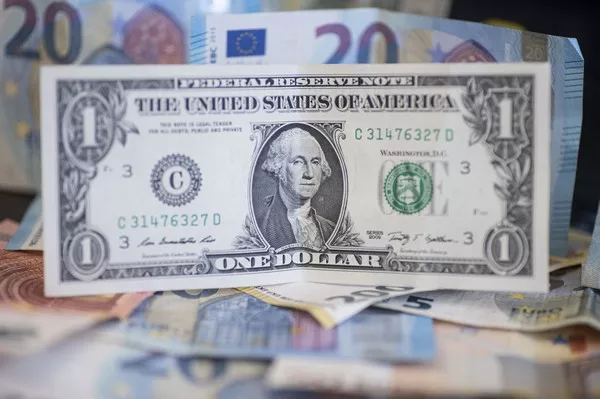Currency exchange rates are a vital aspect of international finance, impacting trade, travel, and investment. Among these exchange rates, the USD buying rate plays a significant role, reflecting the value of the United States Dollar (USD) in the global market. In this article, we delve into the concept of the USD buying rate, its importance, and how it can fluctuate on a daily basis.
The Significance of the USD Buying Rate
The USD buying rate, also known as the exchange rate, is the price at which one can exchange their local currency for US Dollars. This rate is determined by the foreign exchange market, where currencies are bought and sold. It is important for several reasons:
1. International Trade:
The USD is a dominant global currency and is widely used in international trade. The USD buying rate affects the cost and competitiveness of goods and services in the global market. A favorable rate can boost a country’s exports, while an unfavorable rate can impact imports.
2. Travel:
For tourists and travelers, the USD buying rate is crucial. It determines the purchasing power of their local currency in the United States. A strong local currency against the USD means more affordable travel expenses.
3. Investment:
International investors often need to exchange their home currency for USD to invest in US assets, such as stocks, bonds, and real estate. The USD buying rate influences the attractiveness of these investments.
4. Monetary Policy:
Central banks consider exchange rates when formulating monetary policies. Changes in the USD buying rate can affect a country’s inflation, interest rates, and overall economic stability.
The USD Buying Rate Today
The USD buying rate is not fixed but varies on a daily basis. It is influenced by a myriad of factors, including:
1. Economic Data:
Economic indicators, such as GDP growth, employment figures, and inflation rates, play a significant role in determining the USD buying rate. Positive economic data can strengthen the USD.
2. Interest Rates:
Differences in interest rates between countries can attract foreign capital. Higher US interest rates can make USD-denominated investments more appealing, increasing the demand for the currency.
3. Geopolitical Events:
Geopolitical events, such as elections, trade disputes, or global conflicts, can lead to uncertainty in the markets. This uncertainty can impact the USD’s value.
4. Central Bank Actions:
Decisions made by the US Federal Reserve, such as interest rate changes or quantitative easing, can influence the USD buying rate. Central bank policies are closely watched by market participants.
5. Market Sentiment:
Market sentiment and investor speculation can lead to short-term fluctuations in the USD buying rate. Traders’ perceptions of economic conditions and future developments are essential.
6. Supply and Demand:
Like any other commodity, the value of a currency is influenced by supply and demand. If the demand for USD surpasses its supply, its value appreciates.
7. Trade Balance:
A country’s trade balance, which is the difference between its exports and imports, can impact its currency. A trade surplus (more exports) can lead to a stronger currency.
How to Check the USD Buying Rate Today
Checking the USD buying rate is straightforward, thanks to the internet and various financial news sources. Here are the steps to follow:
1. Financial Websites:
Websites like Bloomberg, Reuters, and Yahoo Finance provide up-to-the-minute exchange rate information. You can search for “USD buying rate today” or a similar query to access the latest rates.
2. Forex Platforms:
Forex (foreign exchange) platforms offer real-time exchange rate data. These platforms cater to traders and investors and provide comprehensive information on currency pairs, including USD.
3. Banking Institutions:
Most major banks have a currency exchange rate section on their websites. You can check the USD buying rate offered by your bank or use their online calculators.
4. Currency Converter Apps:
There are numerous currency converter apps available for smartphones. These apps not only provide exchange rate information but also allow you to perform currency conversions.
5. Financial News:
Tune in to financial news channels or visit their websites for updates on exchange rates. Channels like CNBC and BBC World News regularly report on currency markets.
Conclusion
The USD buying rate is a dynamic and vital aspect of the global economy. It affects international trade, travel, investment, and monetary policy. Understanding the factors influencing the USD buying rate can help individuals and businesses make informed financial decisions. By staying informed about the rate’s fluctuations and accessing real-time information through various sources, you can effectively navigate the world of currency exchange and make the most of your financial opportunities.


